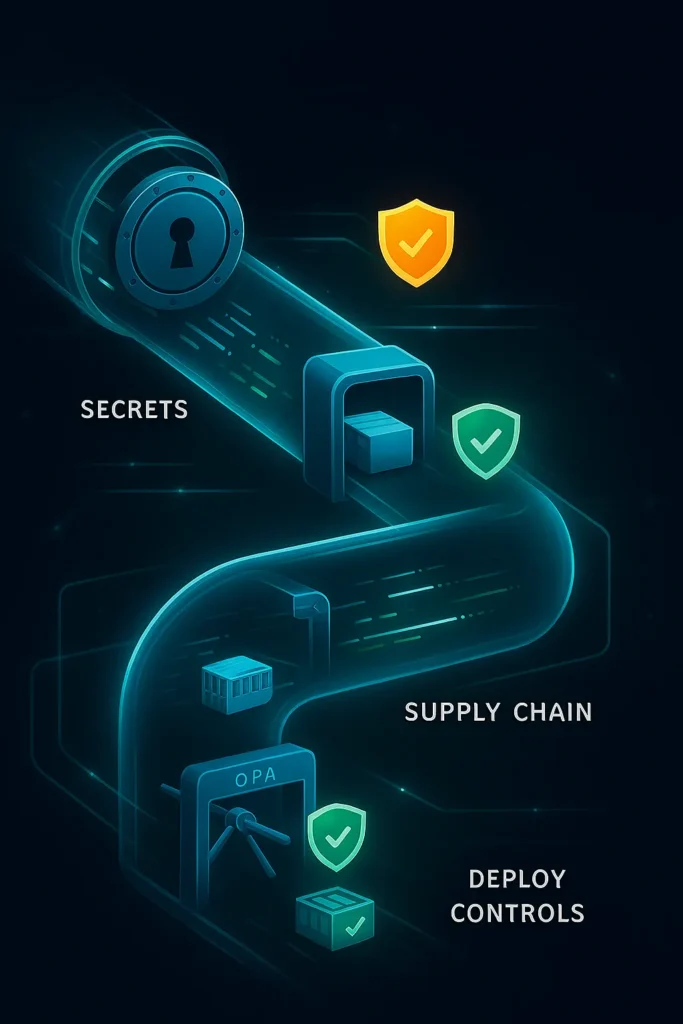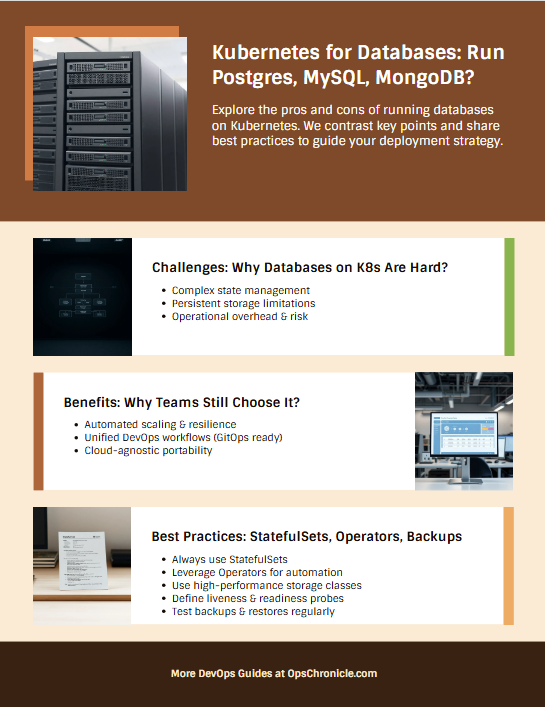Security should move at the speed of your pipeline. In modern cloud environments, continuous integration and continuous deployment (CI/CD) systems are the backbone of innovation. Yet, they also present a significant attack surface if not properly secured. As a DevSecOps lead with over a decade of experience designing secure cloud environments, I’ve seen how unguarded pipelines become entry points for breaches. This guide covers practical strategies to protect your secrets, secure your software supply chain, and enforce deployment policies.

Protect Your Secrets: Avoid Hardcoded Credentials
Hardcoded API keys, tokens, and credentials in source code or configuration files remain a top cause of cloud breaches. In practice, a single leaked secret can grant attackers access to your entire cloud environment.
So, implement these controls:
- Use a secrets management service like AWS Secrets Manager, Azure Key Vault, or HashiCorp Vault. These tools provide automatic rotation, auditing, and fine-grained access policies.
- Inject secrets at runtime instead of storing them in environment variables or code. For example, Kubernetes operators can pull secrets directly from vaults during pod initialization.
- Scan for accidental exposure using pre-commit hooks and CI/CD plugins. Tools like GitLeaks or TruffleHog integrate into pipelines to detect secrets before they reach repositories.
According to a 2024 GitGuardian report, 63% of organizations found more than 100 secrets in their public repositories in the past year—so proactive scanning is non-negotiable.
Secure the Software Supply Chain
Software supply chain attacks—like the SolarWinds incident—exploit trust in third-party code. Without rigorous controls, your pipeline can import and execute malicious dependencies.
Apply these layered security measures:
- Implement Software Bill of Materials (SBOM) to inventory all open-source and third-party components. Tools like Syft generate SBOMs, while Grype scans for known vulnerabilities.
- Enforce artifact signing and verification using Sigstore or cosign. This ensures that only trusted container images and packages progress through deployment stages.
- Adopt a zero-trust approach for dependencies. Assume external packages are malicious until verified. Use AWS Inspector or Azure Container Registry scanning to check for vulnerabilities and misconfigurations.
The U.S. NIST Secure Software Development Framework (SSDF) recommends automated tools for vulnerability scanning at every pipeline stage—so embed these checks early.
Enforce Deployment Policies with Automated Guards
Deployment controls prevent unauthorized changes and configuration drift. In multi-cloud or hybrid environments, consistency is key to maintaining security posture.
Follow these steps to enforce policies:
- Define policies as code using Open Policy Agent (OPA) or AWS Config rules. This allows you to validate infrastructure-as-code (IaC) templates against security benchmarks like CIS Benchmarks before deployment.
- Implement deployment gates that require approvals for sensitive changes. For example, Azure DevOps allows manual intervention checks before production deployments.
- Monitor deployment compliance with cloud security posture management (CSPM) tools. AWS Security Hub or Azure Policy can detect and remediate non-compliant resources automatically.
A 2024 Gartner study noted that organizations using automated policy enforcement reduced deployment-related incidents by 70%—so invest in guardrails, not gates.
Conclusion: Build Security Into Your Pipeline
CI/CD security isn’t a one-time project. It requires continuous measurement and improvement. Start by auditing your secrets management, scanning your supply chain, and automating deployment policies. Embed controls early and measure continuously.
Run a container security scan today. Audit IAM policies across providers. Implement IaC checks in CI/CD.
FAQ
What is the biggest risk in CI/CD security?
The biggest risk is secrets leakage—often through hardcoded credentials in source code. This can lead to full environment compromise. Use centralized secrets managers and automated scanning to mitigate this.
How does IaC scanning improve security?
Infrastructure-as-code (IaC) scanning tools like Checkov or Terrascan identify misconfigurations before deployment. They check for compliance with security policies, reducing the risk of insecure cloud resources.
What are deployment gates in CI/CD?
Deployment gates are automated or manual checkpoints that require approval before proceeding to the next stage. They prevent unauthorized changes and ensure compliance with security and operational policies.
How often should we rotate secrets?
Rotate secrets every 90 days or immediately after any personnel change. Automated secrets management services can handle rotation without application downtime.
Which is better: AWS Secrets Manager or HashiCorp Vault?
Both are effective. AWS Secrets Manager integrates natively with AWS services and offers automatic rotation. HashiCorp Vault is cloud-agnostic and provides advanced secrets engine options. Choose based on your cloud strategy and compliance needs.
How do we prevent supply chain attacks?
Prevent supply chain attacks by verifying third-party artifacts with digital signing, maintaining an SBOM, and scanning all dependencies for vulnerabilities during the CI process.
No post found!


